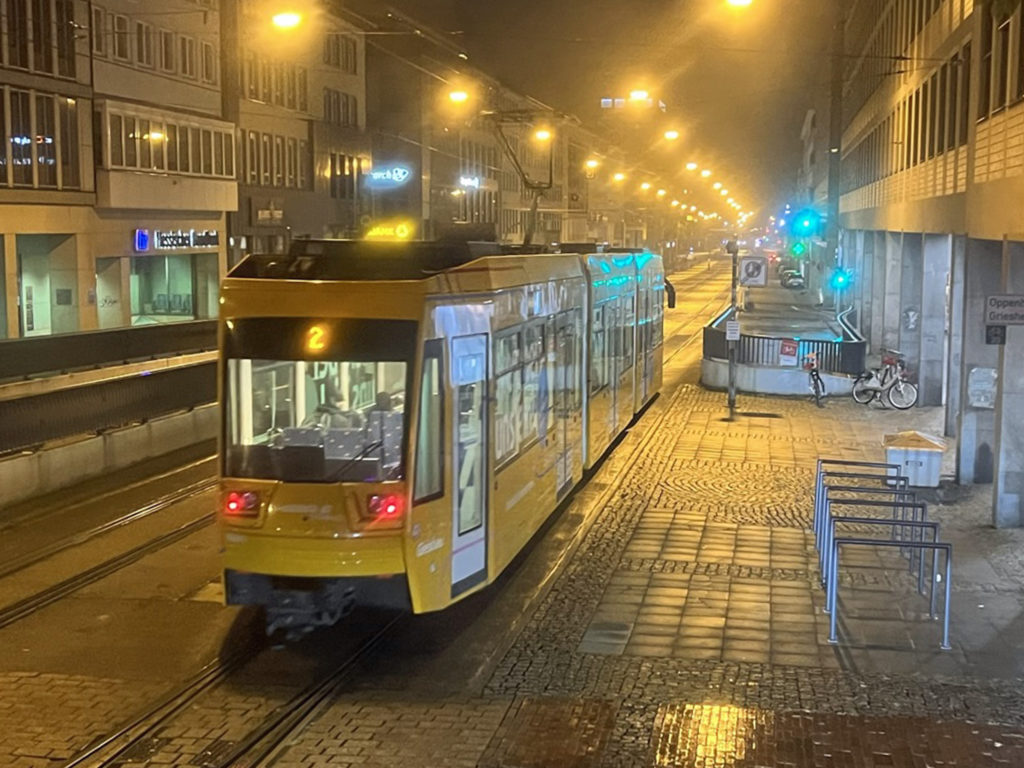There was much to see at Innotrans. No doubt those on its 2,834 stands from 56 different countries were able to learn much from each other. Yet it was my rail journey home that showed me what Britain could learn from Europe’s rail networks.
My trip started at the multi-level Berlin Hauptbahnhof station. Here Deutsche Bahn’s high-speed ICE services operate from eight underground platforms between 3.5-kilometre long tunnels under the city. From here, my journey to Frankfurt included a high-speed line and existing track upgraded up to 250km/h. After staying with friends in the Darmstadt suburb of Eberstadt (population 3,000), my journey home started with a tram at 05:50 on Sunday morning which was part of an all-night service. A bus then took me to Frankfurt Airport for an ICE train to Brussels which took just over three hours as much of this trip was on 300 km/hr high speed lines. The Brussels to London Eurostar train is entirely on high-speed lines and took just two hours five minutes for its 372-kilometre journey.
France completed its first high-speed line in 1981 and there is now a European network of 9,500km of high-speed lines of over 250km/hr. Britain will open its first cut-back 176km domestic high-speed line in about 10 years’ time. Paris opened its RER line in 1977 to connect suburban services between main line stations by tunnels under Paris. London’s equivalent, the Elizabeth line, opened 45 years later.
As well as Berlin, stations such as Zurich, Vienna, Rotterdam, and Antwerp have been rebuilt to cope with growing traffic. In contrast, there is no long-term strategy to alleviate rail congestion in the north where plans for an underground station in Manchester and an HS2 station in Leeds have been shelved. Britain’s nine light rail systems compare with around 30 in France and 60 in Germany. This includes Darmstadt whose population of 200,000 is served by a 42km tram network.

Office of National Statistics figures show that, in 2019, worker output per hour in France and Germany was respectively 17% and 14% greater than in the UK. Whilst there are many reasons for the UK’s historically poor productivity record, poor rail connectivity must be a factor. The UK Government’s 2021 ‘Build Back Better’ strategy identified that the three core pillars of growth were infrastructure, skills, and innovation (with no mention of tax cuts). As Peter Hendy’s Union Connectivity Review noted, these pillars are reliant on transport to deliver their full potential.
An effective rail network is also needed to attract modal shift from road and air if the Government’s net-zero carbon targets are to be achieved. At Innotrans, all the freight locomotives on display were electric. This was an indication of UK rail’s poor carbon record compared with European railways. In Britain there is little demand for electric rail freight traction with an analysis of the latest ORR rail emission figures showing that less than 4% of the energy used by UK freight locomotives is electric. Clearly there is much to learn from Europe.
The decarbonisation imperative was clear at Innotrans where various hydrogen powered rail vehicles were on show, though not much was said about where the hydrogen comes from. Our feature on Scotland’s hydrogen train explains how such trains should be an important part of the developing hydrogen economy. To decarbonise its non-traction energy Network Rail is to take the entire 49.9MW output of a new 200-acre solar farm near Norwich. We also show how the RSSB Rail Carbon Tool can help reduce the rail industry’s carbon footprint.
East West Rail offers carbons benefits from modal shift yet, as David Fenner describes, the future of its eastern part is under threat. Moreover, the decision not to electrify this railway as it is built means that it will be operated by diesel traction. In contrast we describe how ScotRail’s electrification enables old, expensive-to-operate diesel trains to be replaced with electric trains that are much cheaper to buy and run.
With signalling renewals costing around £200 million a year, Paul Darlington considers how signalling can be more affordable through, for example, improved competition, better sharing of best practice and the elimination of lineside signals by ETCS. As we show, a good example of low cost-signalling is the use of a ground frame and token machine to control train movements to Hillhead Quarry.
Clive Kessell reports on the IRSE’s five-day convention in Glasgow which also highlights opportunities for affordable signalling including faster designs with pre-wired components, fewer lineside cases, and plug-coupled tail cables. He notes that the latest signalling technologies yield undoubted benefits for reliability, capacity improvement, and decarbonisation. Yet their adoption is only piecemeal as investment fails to take a long-term view of their benefits.
Another feature describes the IRSE’s licensing scheme which ensures individuals are competent to undertake safety critical work. This also considers professional registration by other bodies.
It would be interesting to know how the competence of those who took the decision to infill the bridge at Great Musgrave was assessed. Bob Wright revisits this issue in his review of the Bill Harvey Associates report on this bridge. His article shows that this report is essential reading for anyone with a professional interest in masonry arch bridges. It also shows that Highways England’s infilling of Great Musgrave Bridge was both unnecessary and ineffective.
Malcolm Dobell was at the address given to IMechE Railway Division by its new Chair, Noel Travers. He reports how Noel considered the contribution engineers can make when working ‘outside their engineering boxes’ and that his key message was that leaders with an engineering understanding can really make a difference.
Our readers would no doubt agree.
Lead photo – Berlin Hauptbahnhof multi-level srtation.
David Shirres – Rail Engineer Editor

